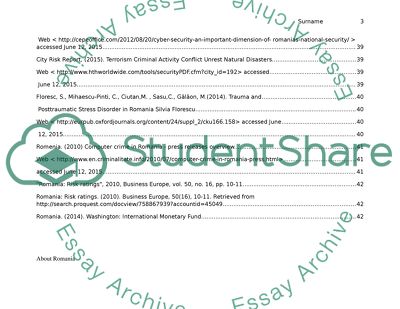Cite this document
(The Purpose of National Risk Assessment in Romania Research Paper, n.d.)
The Purpose of National Risk Assessment in Romania Research Paper. Retrieved from https://studentshare.org/geography/1697326-romania-risk-assessment
The Purpose of National Risk Assessment in Romania Research Paper. Retrieved from https://studentshare.org/geography/1697326-romania-risk-assessment
(The Purpose of National Risk Assessment in Romania Research Paper)
The Purpose of National Risk Assessment in Romania Research Paper. https://studentshare.org/geography/1697326-romania-risk-assessment.
The Purpose of National Risk Assessment in Romania Research Paper. https://studentshare.org/geography/1697326-romania-risk-assessment.
“The Purpose of National Risk Assessment in Romania Research Paper”, n.d. https://studentshare.org/geography/1697326-romania-risk-assessment.


